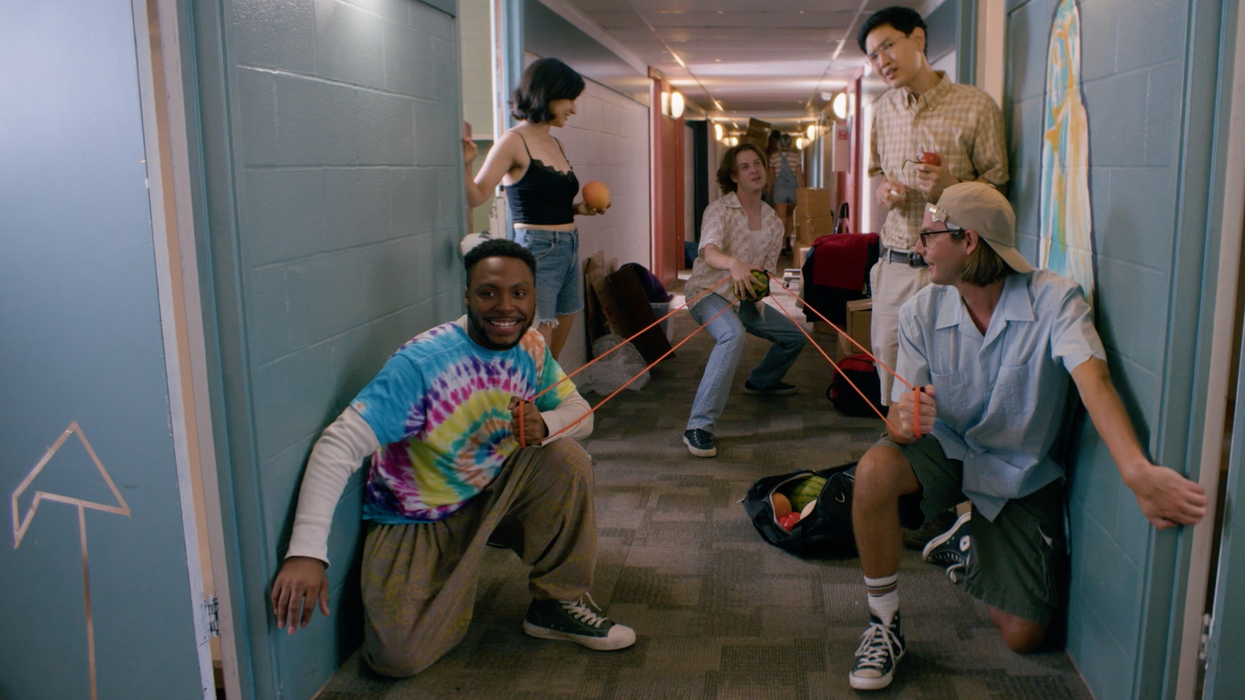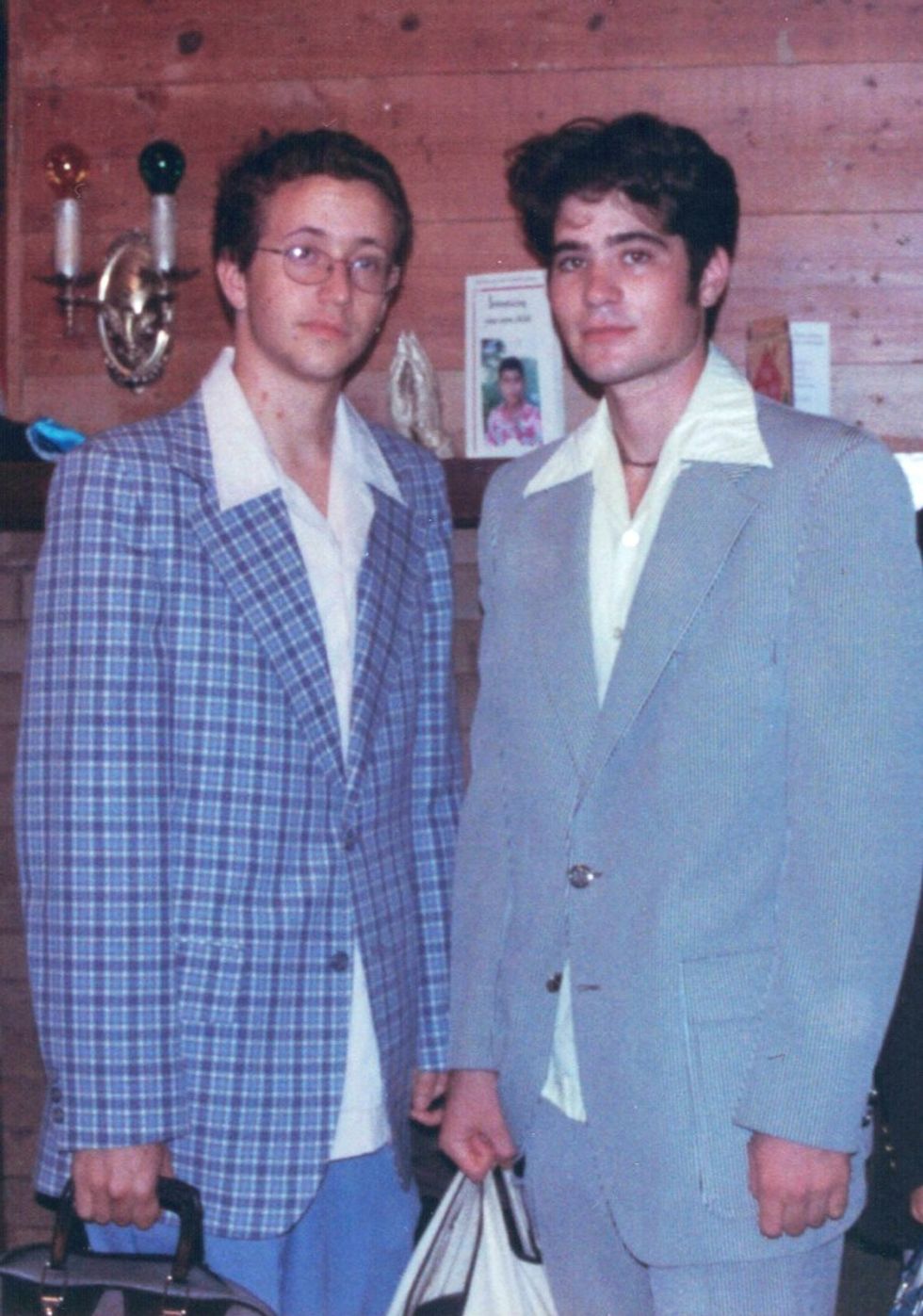How To Make a Movie That Gives Back to Your Community
Home Free is the stoner college comedy designed to start a movement!

This post was written by Lenny Barszap and Aaron Brown, filmmakers of 'Home Free.'
In 1997, as sophomores at the University of Texas at Austin, we invited an unhoused former professor living in the park to crash on our porch. Home Free is a retelling of that story for all to hear. It is a fun, silly, nostalgic, greatest-hits retelling of all the hilarious, dumb shit we did in college. But it’s also about homelessness, one of the biggest social crises facing our country today—a tragic subject we often witness and choose to walk right by. Unfortunately, no one wants to watch a movie about it.
Home Free is a Trojan horse social impact film disguised as a coming-of-age stoner college comedy. Our movie is unapologetically funny, but it’s also intended to be a catalyst for serious social change sharply focused on one of the most pervasive problems across America—the unhousing epidemic. It’s designed to not look like other social impact films—the depressing films that we all know we should watch but that sit in our queues for years.
We want the message to reach the audience that would never watch a sad drama or documentary about homelessness but would sure want to laugh. Humor is our spoonful of sugar.
But we wanted impact to be not just woven into the story of our film but in its very DNA. We knew we wanted it to have a tangible effect, add fuel to a conversation none of us are comfortable having, and actively take a role in getting people off the streets and into supportive and permanent housing. We wanted this silly film to start a movement!
We knew we wanted to align with a nonprofit that was on the front lines in the fight to end homelessness. We also knew we needed to raise a substantial amount of money to pull off making this movie. In the past, we enlisted investors to finance our films through an equity split. They own 50 percent of the equity by funding it, we retain 50 percent for making it. Sell it for a profit and we all make a little money. But this film was untraditional and felt misaligned with strictly being a for-profit entity.
We’d seen documentaries enlist a philosophically aligned nonprofit as a fiscal sponsor allowing them to raise money for their film through tax-deductible donations. The fiscal sponsor keeps a portion of every dollar raised giving them an immediate benefit and the film is able to raise funds through charitable giving. But we knew that it would be very challenging to raise our budget through only this method, so why not employ a hybrid fundraising model combining traditional investment with fiscally sponsored donations?

We then were introduced to The Other One's Foundation (TOOF) through a creative friend, Jazz Mills, who was spearheading a collective of Austin creatives to reduce food insecurity at a 200+ resident homeless encampment called The Esperanza Community.
TOOF was supporting these displaced residents living on a seven-acre site on the east side of Austin, providing case management, low-barrier work opportunities, shower and laundry trailers, and organizing the community towards self-governance. The leaders behind TOOF were also a group of Austin creatives looking to find innovative ways to tackle and bring attention to this issue. We found our philosophically aligned partners.
TOOF was happy to help us and we, in return, committed to the following:
TOOF would immediately get 6% of all dollars donated (through this and other efforts we have shared over $16k+ to date).
Every dollar donated directly increases the profit share that we would earmark to our non-profit partners to lift our neighbors out of homelessness (e.g., if 20% of our funds come from donations, the equivalent of 20% of the investor profit would be donated back).
Our production was committed to a minimum 10% profit sharing. If we couldn’t raise it through donation, we’d cover it out of our production equity.
This allowed us to reach out to traditional and non-traditional film financiers. We could get grants from nonprofits, distributions from donor-advised funds, tax-deductible crowdfunding, etc. Everyone knew that their giving not only gets this film made to amplify the message but also increases profits for charitable organizations. And the film gets to profitability much faster. It was a win/win for everyone.

Now, we have a film that shares a minimum of 10 percent of all profits with organizations that actively get our neighbors off the streets and into supportive and permanent housing.
When people watch our movie in a theater, buy it on a streamer, or tell their friends they know they are being entertained, enlightened, and increasing the tangible impact of the film. When we field offers from distributors, they’ll know if they lowball us, they’re also lowballing these nonprofits.
We did this non-traditional funding model for our non-traditional social impact film, but there is no reason why every film couldn’t do this. Why not raise money this way benefiting everyone involved?
It takes a Herculean effort to make a film, why not have that effort make an impact?
This post was written by Lenny Barszap and Aaron Brown, filmmakers of 'Home Free.'













